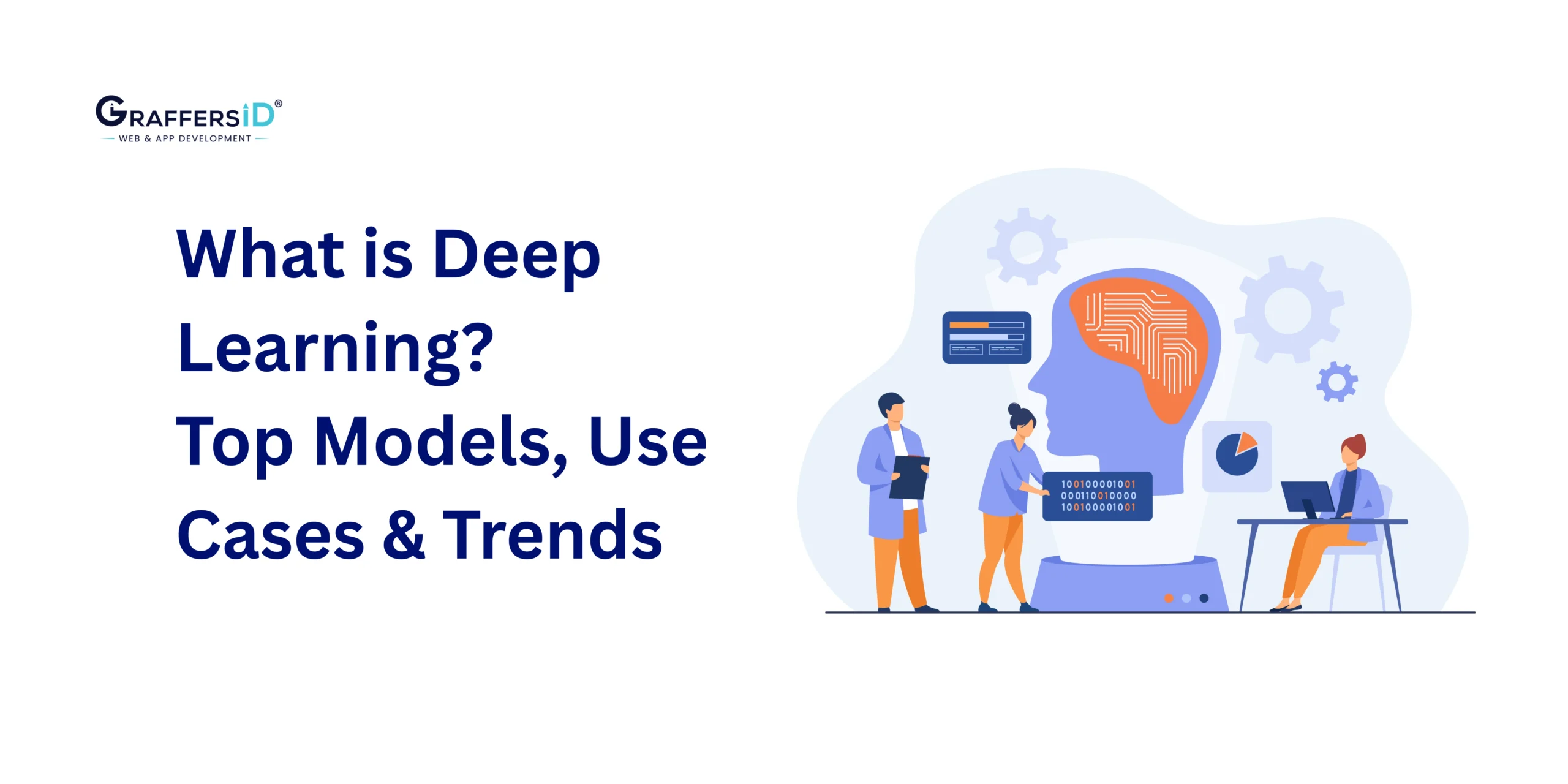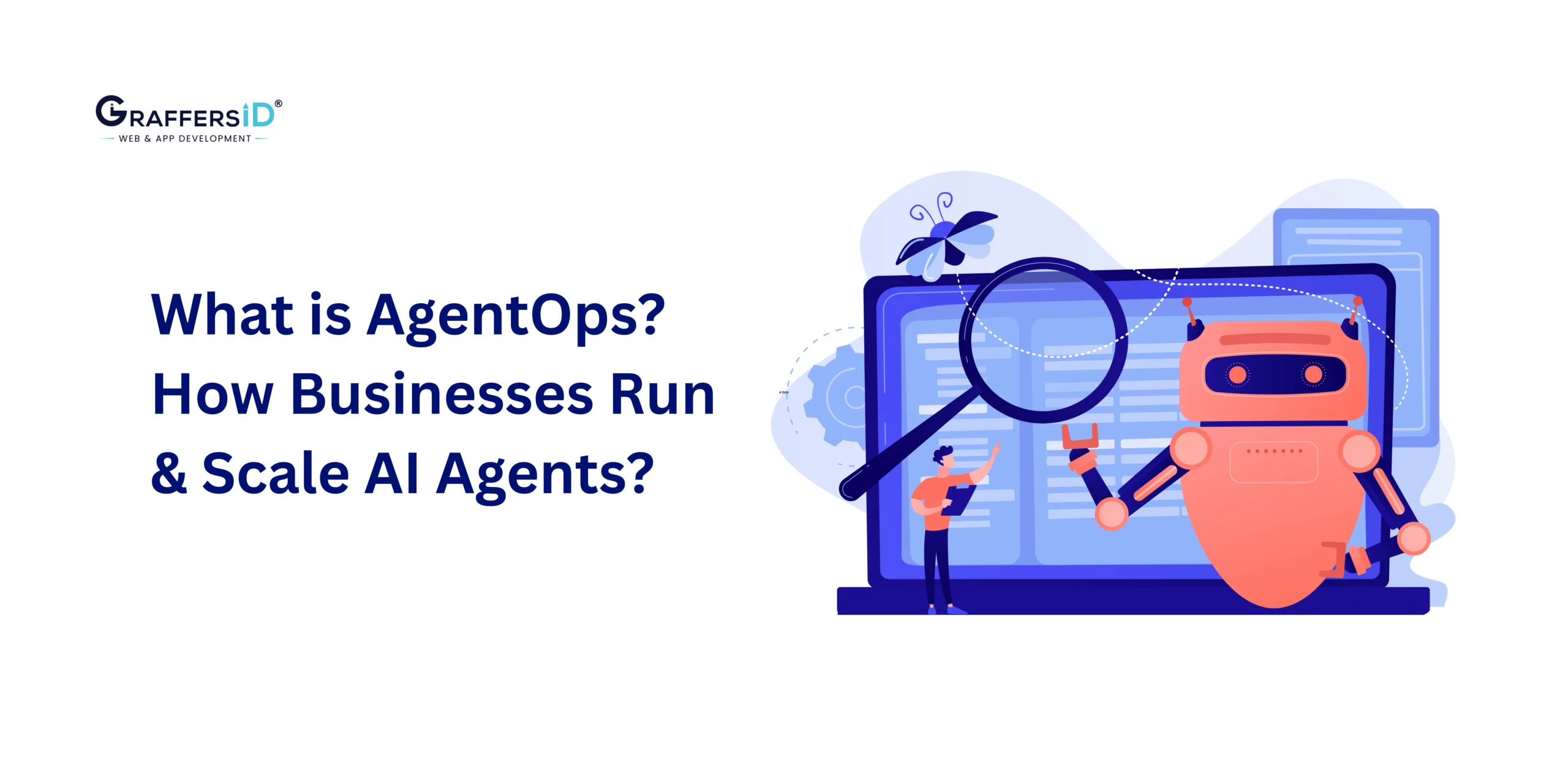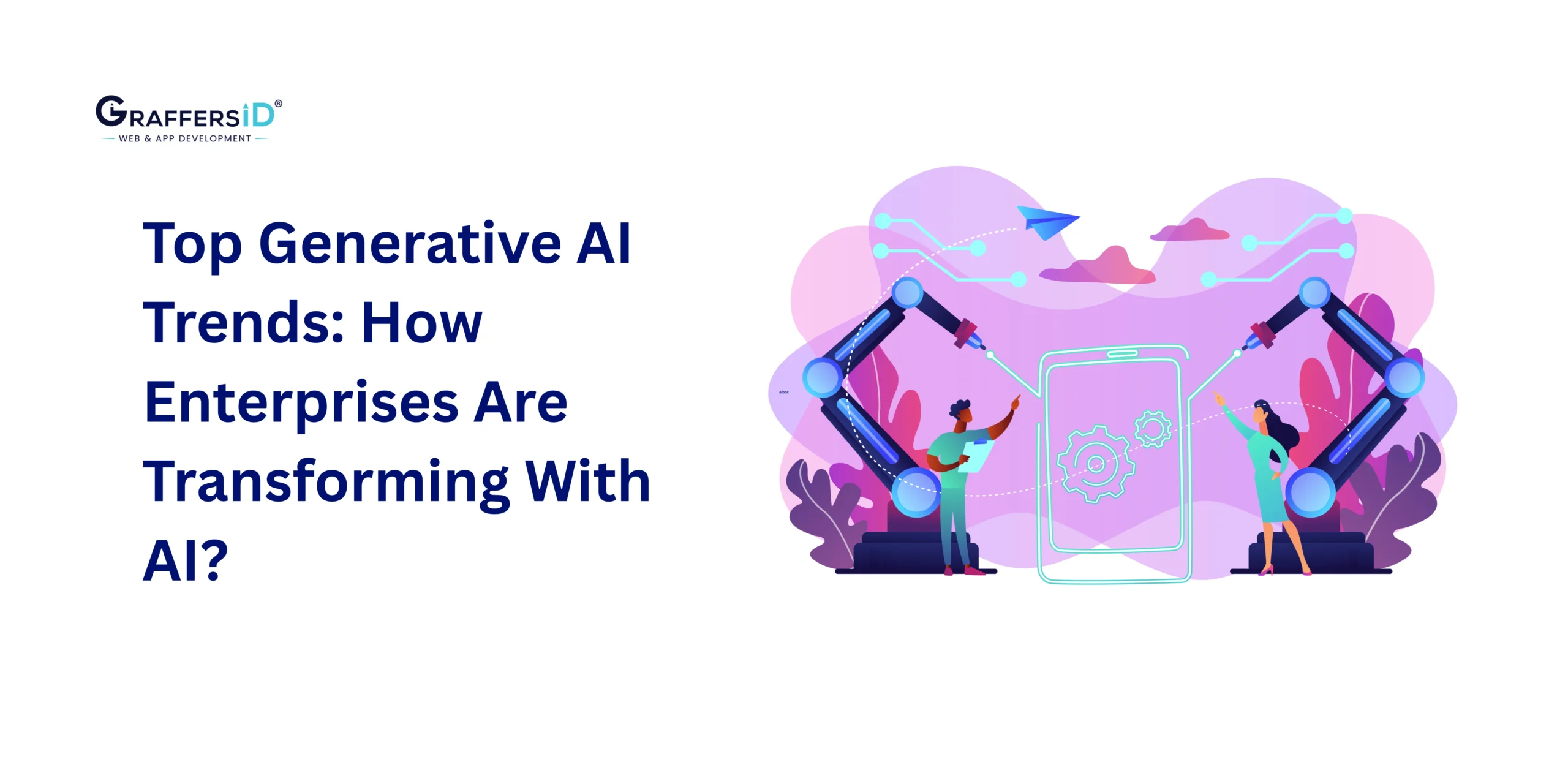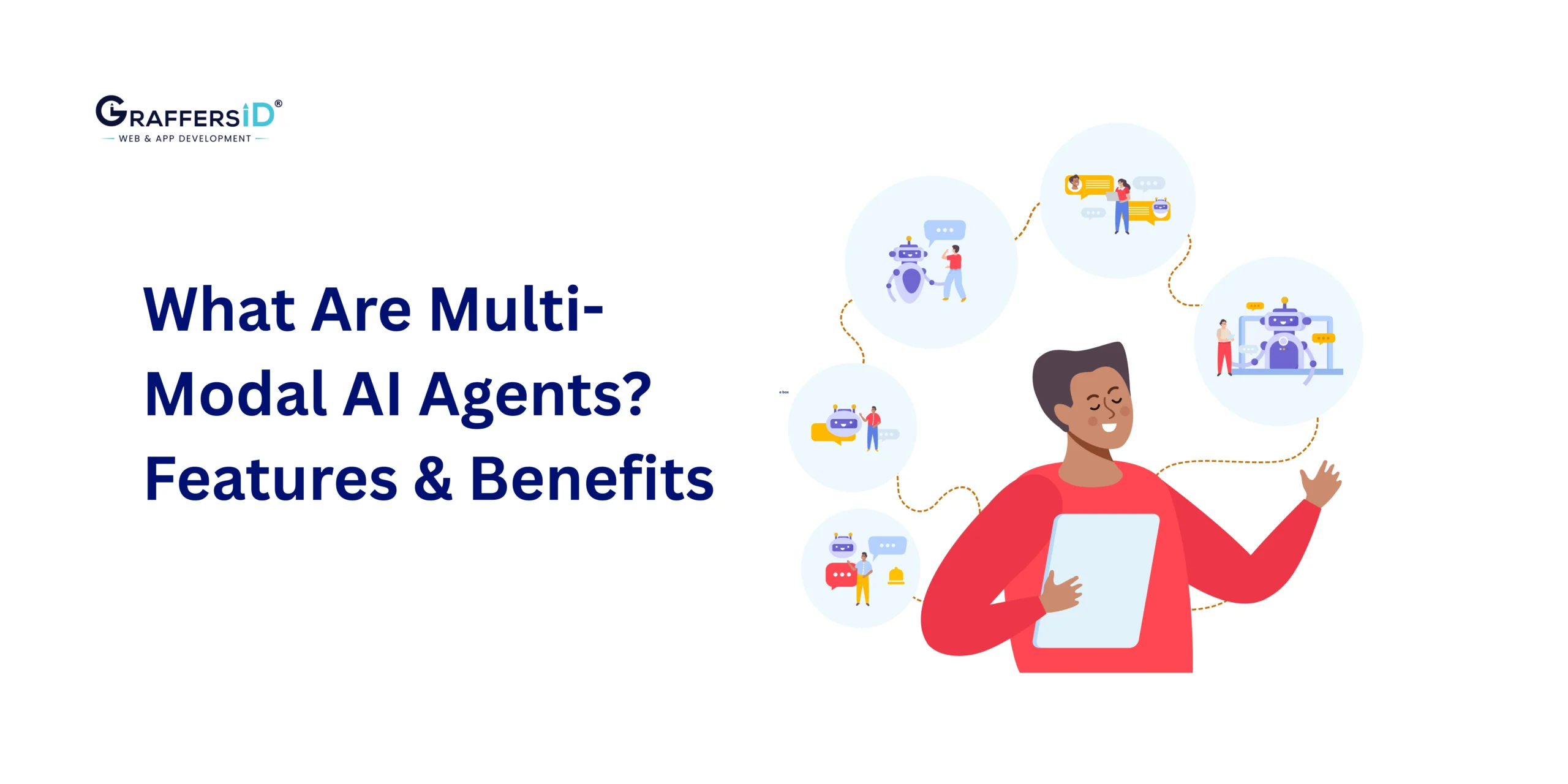Deep learning has become one of the most powerful branches of artificial intelligence in 2026, driving everything from ChatGPT-like generative models to fraud detection, medical imaging, and voice assistants. Unlike older AI systems that relied on human-coded rules, deep learning learns directly from data, much like the human brain identifies patterns, relationships, and outcomes from experience.
What changed the game? Between 2015 and 2021, the cost of training deep learning models dropped by 64%, while training speed jumped by 94%. These leaps made advanced AI accessible not just to tech giants but also to startups and enterprises worldwide. Today, deep learning powers the AI products we interact with daily and the enterprise systems running behind the scenes.
In this guide, we’ll break down deep learning in simple terms, how it differs from machine learning, how neural networks work, the most popular models in 2026, real-world use cases across industries, the challenges businesses face when deploying it, and the future trends.
What is Deep Learning?
Deep learning is a type of artificial intelligence that uses neural networks with multiple layers to process and learn from data.
- Input Layer: Takes raw data such as text, images, or numbers.
- Hidden Layers: Transform this data step by step to recognize patterns.
- Output Layer: Produces results such as predictions, classifications, or generated outputs.
Unlike traditional machine learning, deep learning works with unstructured data like audio, images, and text. It doesn’t need humans to manually pick features; it figures them out automatically. This makes it ideal for complex tasks like medical diagnosis, natural language processing, fraud detection, and autonomous driving.
Read More: Agentic AI vs. Generative AI: Key Differences CTOs Must Know in 2026
Machine Learning vs. Deep Learning: Key Differences in 2026
Machine learning (ML) and deep learning (DL) are closely related, but they are not the same. Here’s a clear breakdown:
| Factor | Machine Learning (ML) | Deep Learning (DL) |
| Feature Handling | Engineers manually select features from raw data | Neural networks automatically learn and extract features |
| Data Needs | Works with smaller datasets (thousands of samples) | Requires very large datasets (millions of examples) |
| Computing Power | Runs on CPUs or small clusters | Needs GPUs, TPUs, or high-performance computing clusters |
| Accuracy | Good for structured data, but struggles with unstructured data | Excels with unstructured data (images, speech, text) and delivers higher accuracy |
| Use Cases | Fraud detection, recommendation systems, predictive analytics | Generative AI, computer vision, natural language processing, and autonomous systems |
In 2026, the choice between machine learning and deep learning depends on the problem, dataset size, and computing resources.
How Does Deep Learning Work in 2026?
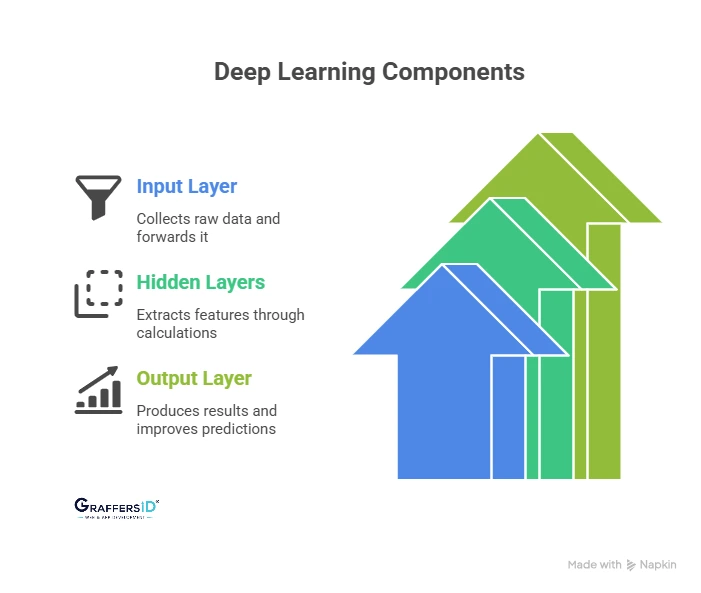
1. Input Layer (Data Ingestion)
- Collects raw data like pixels, audio signals, or text.
- No calculations, just forward the data.
2. Hidden Layers (Feature Extraction)
- Each neuron applies weights, biases, and activation functions.
- Early layers recognize simple shapes or sounds.
- Deeper layers recognize complex features like faces, sentences, or fraud patterns.
3. Output Layer (Prediction)
- Produces results: classification, prediction, or generation.
- Uses activation functions like sigmoid, softmax, or linear functions.
- Backpropagation improves predictions by reducing errors over time.
Popular Deep Learning Models in 2026 (With Examples)
Deep learning models have evolved rapidly, and in 2026, a handful of architectures dominate real-world applications. Here’s a breakdown of the most popular models:
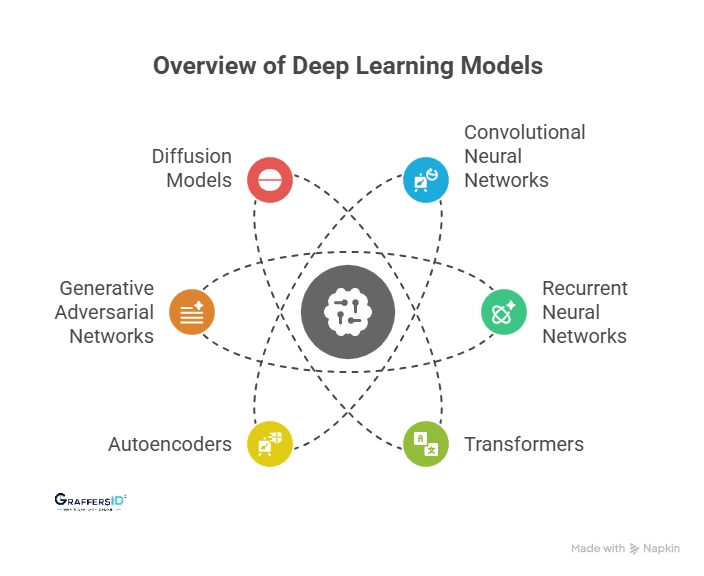
1. Convolutional Neural Networks (CNNs)
- Best for: Image recognition and computer vision
- Use cases: Facial recognition, medical imaging, autonomous driving systems
- How it works: Extracts features such as edges, textures, and shapes directly from pixel data, enabling accurate image classification and detection.
2. Recurrent Neural Networks (RNNs) & LSTMs
- Best for: Sequential and time-dependent data (speech, text, time-series)
- Use cases: Language modeling, sentiment analysis, financial forecasting
- How it works: Maintains memory of previous inputs, helping predict future data points more effectively.
3. Transformers
- Best for: Natural language processing (NLP) and generative AI
- Use cases: Chatbots, translation tools, multimodal AI (text + images + audio)
- How it works: Uses attention mechanisms to analyze all input data simultaneously, making it more efficient than step-by-step models like RNNs.
4. Autoencoders
- Best for: Anomaly detection and data compression
- Use cases: Fraud detection, ECG anomaly detection, image reconstruction
- How it works: Learns to compress input data into a lower-dimensional space and then reconstruct it, highlighting irregular patterns.
5. Generative Adversarial Networks (GANs)
- Best for: Creating synthetic and high-quality data
- Use cases: Medical research, AI-generated images, deepfakes, training dataset generation
- How it works: A generator creates synthetic data while a discriminator tries to detect fakes, and both improve through competition.
6. Diffusion Models
- Best for: High-quality image generation
- Use cases: AI art, product design, gaming asset creation, realistic visuals
- How it works: It starts with random noise and gradually removes it to generate detailed and realistic images.
In 2026, transformers and diffusion models dominate cutting-edge AI applications, while CNNs, RNNs, and GANs continue to power industry-specific use cases.
Real-World Applications of Deep Learning in 2026
Deep learning has moved far beyond research labs; in 2026, it is powering real-world systems across industries. Here are the top applications of deep learning today:
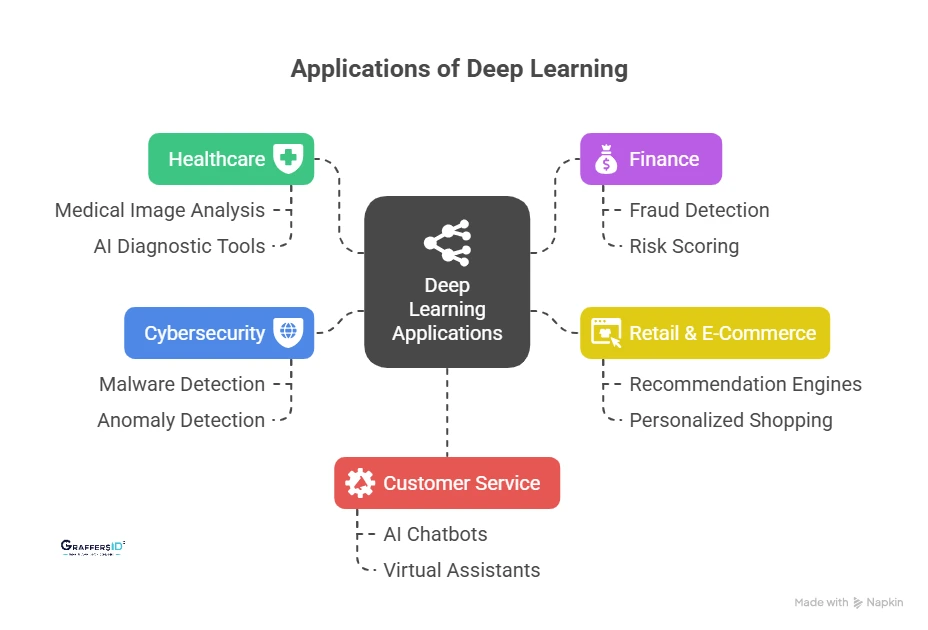
1. Healthcare
- CNNs analyze medical images such as X-rays, MRIs, and retinal scans.
- AI diagnostic tools now match or exceed the accuracy of leading specialists in detecting cancers and diabetic retinopathy.
- Hospitals use deep learning to improve early diagnosis, treatment planning, and patient monitoring.
2. Finance
- LSTM-powered models drive fraud detection at companies like PayPal and American Express.
- Banks use deep learning for risk scoring, credit assessments, and compliance monitoring.
- AI helps reduce false positives in fraud detection, saving millions in losses.
3. Retail & E-Commerce
- AI-powered recommendation engines boost purchases by up to 252%.
- Deep learning personalizes shopping experiences, increasing sales, conversions, and customer loyalty.
- Retailers use AI to optimize inventory and predict buying trends.
4. Cybersecurity
- RNNs and autoencoders detect malware, phishing attacks, and anomalies in network traffic.
- Deep learning reduces threat detection and response time by up to 70%.
- Enterprises deploy AI-driven systems for real-time monitoring and proactive defense.
5. Customer Service
- AI chatbots powered by transformers now handle over 50% of customer queries, cutting operational costs by 30%.
- Virtual assistants boost customer satisfaction by 33% through faster, personalized support.
- Enterprises integrate voice AI and multilingual chatbots for global customer engagement.
Challenges in Deploying Deep Learning in 2026
While deep learning powers some of the most advanced AI systems in 2026, deploying it at scale comes with serious challenges, like:
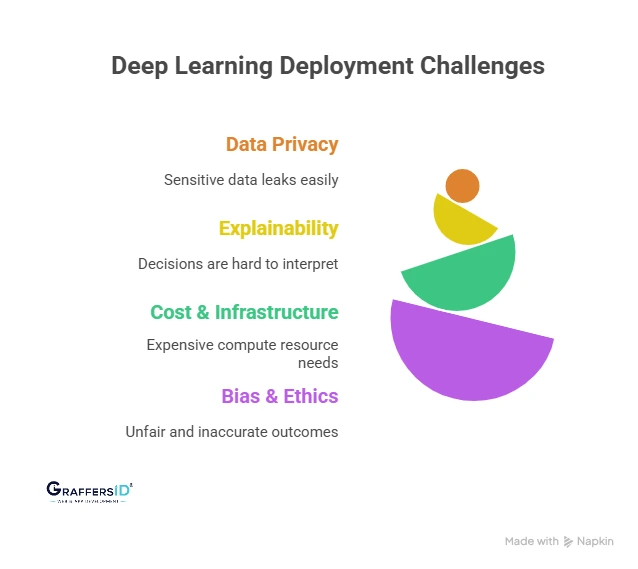
1. Data Privacy & Security
- Deep learning models can inadvertently leak sensitive information.
- Attacks such as membership inference and data extraction are becoming more common.
- Enterprises need robust data governance, encryption, and privacy-preserving techniques like federated learning and differential privacy.
2. Explainability (XAI)
- Deep learning is often considered a “black box,” making its decisions hard to interpret.
- With regulations like the EU AI Act and upcoming US AI standards, explainability is mandatory for high-risk AI systems.
- Companies are investing in Explainable AI (XAI) tools to increase transparency, accountability, and trust.
3. Cost & Infrastructure
- Training cutting-edge models can cost millions of dollars in compute resources.
- GPUs, TPUs, and skilled AI talent remain expensive and difficult to scale.
- Cloud platforms now offer pay-as-you-go AI infrastructure, but organizations must balance performance with budget.
4. Bias & Ethics
- AI recruiting tools have shown gender bias, leading to unfair hiring outcomes.
- Facial recognition systems continue to struggle with racial fairness and accuracy.
- To comply with ethical AI standards, businesses must adopt bias-detection frameworks, fairness audits, and responsible AI governance.
The real challenge isn’t just building deep learning models; it’s deploying them responsibly, transparently, and at scale.
Future Trends of Deep Learning in 2026 & Beyond
Deep learning is evolving rapidly, and several key trends are shaping how businesses and industries will use AI in the years ahead.
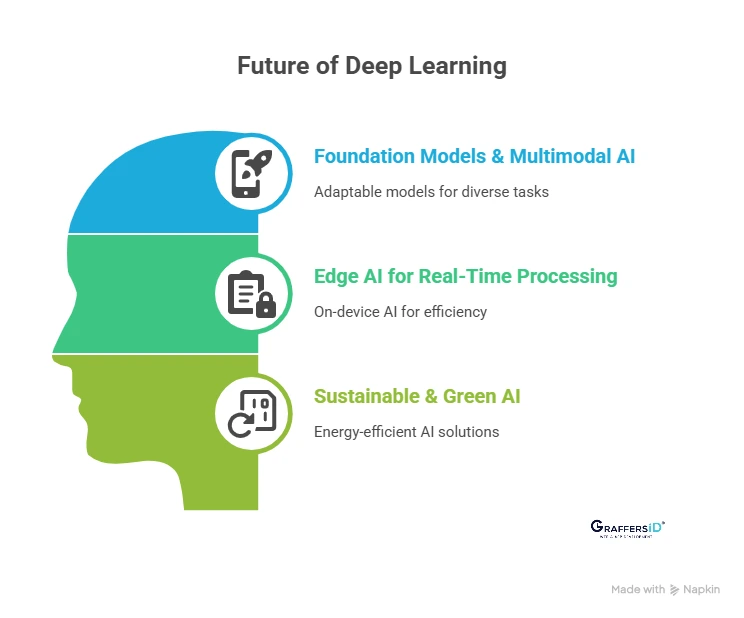
1. Foundation Models & Multimodal AI
- Trained on huge datasets, adaptable for multiple tasks.
- Power advanced LLMs like GPT-5, Claude, LLaMA, and multimodal models that handle text, images, video, and audio together.
- This shift enables more context-aware AI agents, cross-domain learning, and smooth human-AI interaction.
2. Edge AI for Real-Time Processing
- AI is increasingly deployed directly on IoT devices, AR/VR headsets, and autonomous systems.
- On-device inference reduces latency, bandwidth costs, and security risks while improving data privacy and user experience.
3. Sustainable & Green AI
- Training large AI models still consumes significant energy and compute resources.
- Companies are adopting model compression, pruning, and quantization to make models lighter and more efficient.
Conclusion
Deep learning has matured into the backbone of modern AI systems. Its ability to process massive datasets, learn complex patterns, and deliver high accuracy makes it indispensable for industries from healthcare to finance.
At the same time, deep learning requires vast data, powerful infrastructure, and careful handling of privacy, bias, and cost concerns.
If you’re looking to integrate deep learning and AI solutions into your business with expert support, hire skilled AI developers from GraffersID.
